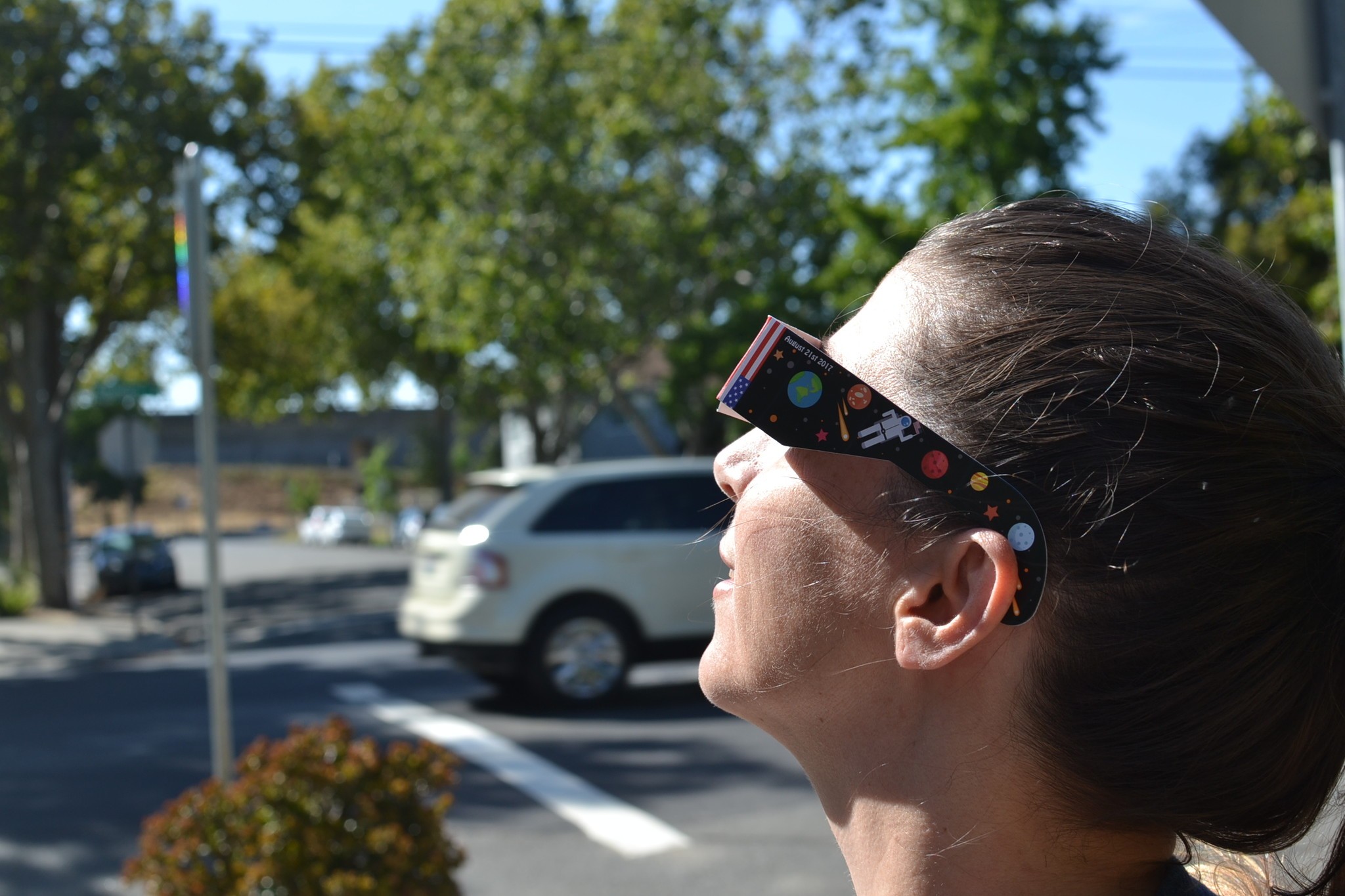How to safely view a solar eclipse

First off:

You can't view a solar eclipse without proper protection, since the sun's light becomes incredibly concentrated as more of it is covered up by the moon. Think of it like burning ants through a magnifying glass, only instead of ants it's your retinas.
If you're thinking of watching the 2017 total solar eclipse, then you'll need to take the necessary precautions to protect your eyeballs, as well as your camera lenses (yeah, the sun will screw up your iPhone's camera if you're not careful).
When will the eclipse take place?
In just a few moments! NASA projects that the eclipse will begin around 10:17AM PST (1:17PM EST) along the west coast of the United States, and end around 2:50PM EST on the east coast. You can check exact time projections on NASA's website to better know when the eclipse will show up in your part of the world.
Wear proper protective eyewear
There has been much ado about fake eclipse glasses as of late, since so many have been sold and they may not necessarily protect your eyes properly. In order to properly view the eclipse, you should only use NASA- and American Astronomical Society-approved eclipse glasses or solar filters that are ISO 12312-2-compliant.
The AAS has a handy list of reputable vendors so that you can be sure you're getting eclipse glasses or solar filters that actually work. Your best bet is to stick with something from this list. Otherwise… you know… you could go blind. Like blind blind.
NASA's eclipse glasses/solar filter tips
- Always inspect the glasses or solar filter before using them. If either is scratched or damaged in any way, get rid of it.
- Always supervise children who may be using viewing glass or solar filters. If used improperly for even a moment, it could lead to permanent eye damage.
- Stand still and fully cover your eyes with your eclipse glasses or solar filter before looking up at the sun. When you're finished, look away and then remove your glass or the filter.
- If you normally wear glasses, keep them on and put your eclipse glasses over them or hold your viewer in front of them.
DO NOT
Here's everything NASA says you SHOULD NOT DO during the solar eclipse:
iMore offers spot-on advice and guidance from our team of experts, with decades of Apple device experience to lean on. Learn more with iMore!
- Do not look at the uneclipsed or partially eclipsed portions of the sun without protection
- Do not look at the uneclipsed or partially eclipsed portions of the sun through an unfiltered camera, telescope, binocular, or other optical device.
- Do not look at the sun through a camera, telescope, or binoculars while using your eclipse glasses or handheld solar filter; the concentrate solar rays will damage the filter and mess your eyes up badly (re: blindness).
- Do not, at any point during the eclipse, view the sun directly without a solar filter or eclipse glasses if you are outside the path of totality.
That said...
All these warnings may make it seem like you're about to step into a nuclear reactor if you're not careful, but don't let them scare you off. With proper eye protection, you can stare at the sun for as long as you like, and if your eclipse glasses or solar filter remains undamaged, you can use it indefinitely. Just remember to be safe, follow the instructions that come with whatever method you choose — and do not, under any circumstances, go near a vampire's tomb during totality.
Will you be viewing the eclipse?
Are you going anywhere special to view the 2017 total solar eclipse? Let us know what your plans are in the comments below!
Mick is a staff writer who's as frugal as they come, so he always does extensive research (much to the exhaustion of his wife) before making a purchase. If it's not worth the price, Mick ain't buying.

